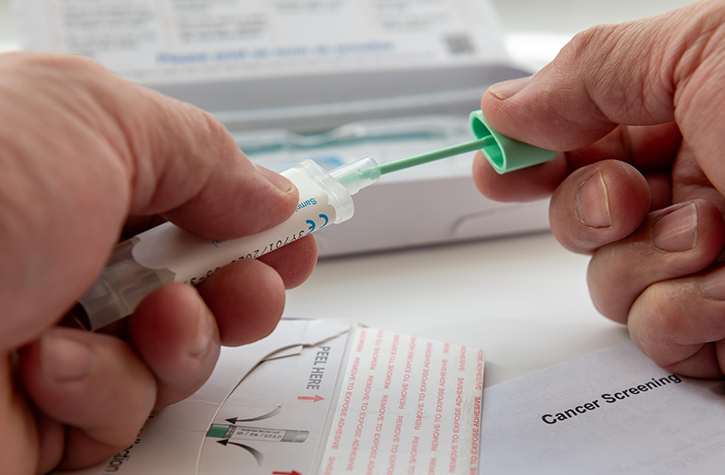Researchers are continuing to discover associations between environmental contaminants and autism spectrum disorder, which now affects 1 in 68 children in the United States.
In 2014, a University of Pittsburgh Graduate School of Public Health study showed an association between chromium and styrene pollution and autism, while also noting previously discovered links with cyanide, methylene chloride, methanol and arsenic.
Now an association between polychlorinated biphenyls (PCBs) and autism has been found in a study led by a Drexel University researcher and published last month in Environmental Health Perspectives.
In particular, children born to mothers with higher blood levels of PCBs during the second trimester of pregnancy had roughly an 80 percent higher risk of being diagnosed with autism than children of mothers with the lowest blood levels of the chemicals.
“The overall pattern of our results suggests increases in risk of autism spectrum disorders with prenatal exposure to higher levels of a number of
The study also measured levels of organochlorine pesticides (OCPs) in pregnant mothers’ bloodwork, which include chemicals such as DDT. While finding no association with autism, the study did show an association between OCPs and other types of intellectual disabilities in children.
Before they were banned in the 1970s due to health risks, PCBs were used as lubricants, coolants and insulators in consumer and electrical products and continue to exist in the environment, including in fatty foods. People living near incinerators and other PCB-disposal facilities, or the 500 current or former hazardous waste sites on the National Priorities List, face higher exposure rates, a U.S. Centers for Disease Control and Prevention report warns.
Kristen Lyall, lead author of the study, cautioned that the results show only an association, and not a direct cause of autism, whose development in fetuses and children typically involves a complex medley of factors including genetic ones.
This is one reason why a ribbon of puzzle pieces is used to symbolize the disorder affecting 1 in every 42 boys and 1 in every 189 girls.
“This is such a complex and diverse condition and that puzzle piece symbol really is appropriate because there are many pieces in the puzzle,” said Ms. Lyall, an assistant professor in Drexel University’s A.J. Drexel Autism Institute with a doctor of science degree in epidemiology. “For different affected people, there are likely different puzzle pieces.”
A fair amount of research already has examined these chemicals’ impact on birth weight and other health outcomes, she said, but there’s been little focus on their potential link with autism, until recently.
The study involved 1,144 children born in Southern California between 2000 and 2003 and includes mothers enrolled in California’s Expanded Alphafetoprotein Prenatal Screening Program, which is “dedicated to detecting birth defects during pregnancy,” Drexel University reported as background to the study. Lisa A. Croen of Kaiser Permanente’s Division of Research, another author on the study, initiated the research.
In this case-control study, the children were enrolled as three groups, one with 545 children diagnosed with autism spectrum disorder, 181 with intellectual disabilities but no autism diagnosis and 418 with neither diagnosis. Levels of chemicals were measured in samples collected from mothers during the second trimester of pregnancy to determine exposure to PCBs and OCP and these exposure levels were compared between the groups.
PCB and OCP compounds linger not only in the environment but also in human and animal fat cells, the study says. Boosting concern is their ability to cross the placenta from the mother’s blood into the fetus, potentially leading to health impacts and disruption of hormones in the fetus.
“There are a number of potential pathways these chemicals may follow to impact neurodevelopment, and one of the primary ones here is suspected to be through endocrine disruption,” Ms. Lyall said.
Reducing such exposure is not easy. “These chemicals stick around in the environment,” she said. “And the primary source of exposure for most people today is from fat in foods we eat, including consumption of meat, dairy and fish products.”
Future studies are needed to analyze genetic factors in addition to PCB exposures to learn more about how these may interact in developmental problems, Ms. Lyall said.
Amy Kalkbrenner, an assistant professor at the University of Wisconsin-Milwaukee’s Joseph J. Zilber School of Public Health, said the study represents “a step forward because it had a larger sample than previous studies, included a few individual chemical species that previously had not been examined and measured the chemicals in a very accurate way.”
“Strong studies such as [Ms.] Lyall’s are important in identifying reasons for the high prevalence of autism, especially in identifying factors that can be addressed, even if each individual factor is only a small part of the picture,” said Ms. Kalkbrenner, who also holds a Ph.D. She wasn’t involved with the research. “It is sobering to note that these PCBs and pesticides have already been banned but yet their legacy persists, raising the uncomfortable question about whether there are other unstudied chemicals still in use with lasting health impacts.”
The relative risks of the chemicals reported in the study “are not trivial,” and “are definitely noteworthy,” said Jennifer Adibi, an assistant professor of epidemiology at Pitt Public Health who also had no role in the Lyall-Croen study.
Many of the PCB-related differences in neurodevelopment went away when the authors accounted for two key factors: the age of the mother and the number of children she previously gave birth to, she said. Still, two of the 13 chemicals studied remained correlated with the neurodevelopmental outcomes.
“I feel that evidence like this demonstrates that the standard suite of chemicals in our bodies and in our food supply are tweaking our biology in ways that may be adding up to measurable differences in the overall development of children and the overall reproductive function of our species,” Ms. Adibi said.
This story appeared in the Pittsburg Post-Gazette on September 6, 2016






